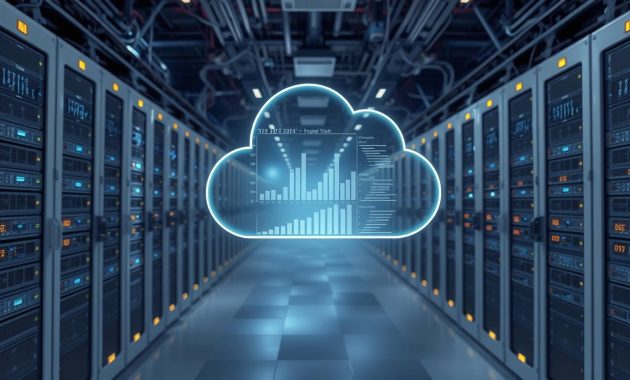Embark on a journey through the realm of serverless computing, a paradigm that has emerged as a cost-effective and scalable alternative to traditional cloud servers. For entities seeking to optimize their cloud infrastructure, grasping the nuances of serverless computing is imperative. This exploration will illuminate the distinctions between serverless computing and conventional cloud computing, shedding light on its applicability across diverse scenarios. Such knowledge is vital for enhancing your comprehension of serverless computing’s role within the broader context of cloud servers.
Upon completion of this discourse, you will possess a thorough understanding of serverless computing and its symbiotic relationship with cloud servers. This knowledge will empower you to make strategic decisions regarding the adoption of serverless computing solutions within your organization. It will also deepen your grasp of the interplay between serverless computing and cloud servers, positioning you to navigate the complexities of modern cloud infrastructure with confidence.
Understanding Serverless Computing Basics
In the realm of cloud computing, it is imperative to comprehend the foundational principles of serverless computing. This paradigm has garnered significant attention for its capacity to diminish expenses and enhance scalability. In serverless computing, the cloud provider assumes responsibility for the infrastructure, with users only incurring costs for the resources utilized. This model diverges markedly from traditional cloud computing, where users bear the burden of infrastructure management.
Grasping the serverless computing basics necessitates an understanding of its distinction from traditional cloud computing. Traditional cloud computing demands the provisioning and management of servers, a task that is both time-consuming and financially burdensome. Conversely, serverless architectures empower developers to concentrate on coding and application deployment, unencumbered by the complexities of underlying infrastructure. 
The pivotal advantages of serverless architectures encompass:
- Reduced costs: Users only incur expenses for the resources utilized, leading to substantial cost reductions.
- Increased scalability: Serverless computing facilitates rapid and efficient scaling of applications.
- Improved reliability: The cloud provider’s management of infrastructure minimizes the likelihood of downtime and errors.
By comprehending serverless computing basics and its divergence from traditional cloud computing, one can make informed decisions regarding its adoption. Serverless architectures present a multitude of benefits, including cost reduction and scalability enhancement, rendering them an appealing choice for enterprises aiming to optimize their cloud computing resources.
The Role of Cloud Servers in Serverless Computing
Cloud servers are indispensable in serverless computing, furnishing the infrastructure for application execution without server administration burdens. Understanding their role is crucial as you delve into serverless computing’s advantages. Cloud servers enable you to concentrate on application development and deployment, while the cloud provider handles infrastructure management.
Infrastructure management with cloud servers offers numerous benefits, including scalability, flexibility, and reliability. Cloud services provide a suite of tools and features to streamline infrastructure management, simplifying the upkeep of applications. Key advantages of cloud services in serverless computing include:
- Increased flexibility and scalability
- Improved security and reliability
- Reduced maintenance and management costs
Utilizing cloud servers and services enables the creation of a resilient and efficient serverless computing environment. This is vital whether you’re developing a new application or migrating an existing one to the cloud. 
Infrastructure Management with Cloud Servers
Infrastructure management with cloud servers encompasses tasks such as monitoring, maintenance, and optimization. Cloud services automate many of these tasks, allowing you to allocate more time and resources to application development and deployment. By employing cloud servers and services, you can establish a scalable and efficient infrastructure that supports your serverless computing endeavors.
Common Serverless Use Cases
Delving into the realm of serverless computing unveils a plethora of applications and use cases. These span from the processing of real-time data to the development of scalable web applications. Serverless computing facilitates the streamlining of operations, thereby enhancing operational efficiency.
Within the domain of event-driven applications, serverless computing offers a robust framework for managing sudden spikes in traffic or demand. It enables the creation of applications that react to events in real-time, obviating the need for continuous server management.
Common serverless use cases encompass:
- Constructing scalable web applications capable of handling substantial volumes of traffic
- Developing event-driven applications that respond to real-time events
- Processing and analyzing voluminous datasets in real-time
These examples highlight the versatility of serverless computing and its transformative potential in application development and deployment. By grasping the various serverless use cases, one can identify avenues for its adoption within their organization, thereby boosting overall efficiency.
In the context of web applications, serverless computing empowers developers to concentrate on coding and delivering value to users, unencumbered by infrastructure concerns. Leveraging serverless use cases, developers can craft web applications that are not only scalable and secure but also provide an enhanced user experience.
Challenges and Considerations in Serverless Architectures
Embarking on the journey of serverless computing necessitates an understanding of the serverless challenges that may emerge. A paramount concern is vendor lock-in, which can severely restrict your ability to switch providers. This predicament can be averted by meticulously scrutinizing the contractual obligations of your cloud provider and opting for a vendor that guarantees a high degree of portability.
The realm of cost management is another critical aspect to consider. Serverless computing, while potentially cost-effective, can precipitate unforeseen expenses if not managed adeptly. It is imperative to vigilantly monitor your resource utilization and refine your applications to curtail inefficiencies. Additionally, exploring various pricing models can facilitate the identification of the most economical option for your requirements.
- Implementing a multi-cloud approach to avoid vendor lock-in
- Using cost estimation tools to predict and manage expenses
- Optimizing resource usage to minimize waste and reduce costs
By being cognizant of these potential hurdles and proactively addressing them, you can ensure a seamless transition to a serverless architecture. This will enable you to harness the full potential of this groundbreaking technology.
Best Practices for Implementing Serverless Solutions
To fully realize the benefits ofserverless computing, it’s crucial to follow best practices when implementingserverless solutions. First and foremost, choose the rightcloud providerthat aligns with your specific needs and requirements. Different providers offer varying levels of functionality, scalability, and pricing models, so thoroughly evaluate your options.
Next, design yourserverless applicationsfor maximumscalabilityandefficiency. Leverage the inherent scalability of serverless architectures by using event-driven triggers and adopting a microservices approach. This will ensure your applications can seamlessly handle fluctuations in traffic and workloads.
Lastly, prioritizesecurity practiceswithin yourserverless environments. Implement robust authentication and authorization mechanisms, and leverage encryption techniques to protect sensitive data. Stay vigilant and proactively address any vulnerabilities that may arise, as the shared responsibility model in serverless requires a collaborative effort between you and your cloud provider.
By following thesebest practices, you’ll be well on your way to a successful and rewarding transition toserverless computing, unlocking its full potential and maximizing the benefits for your organization.
